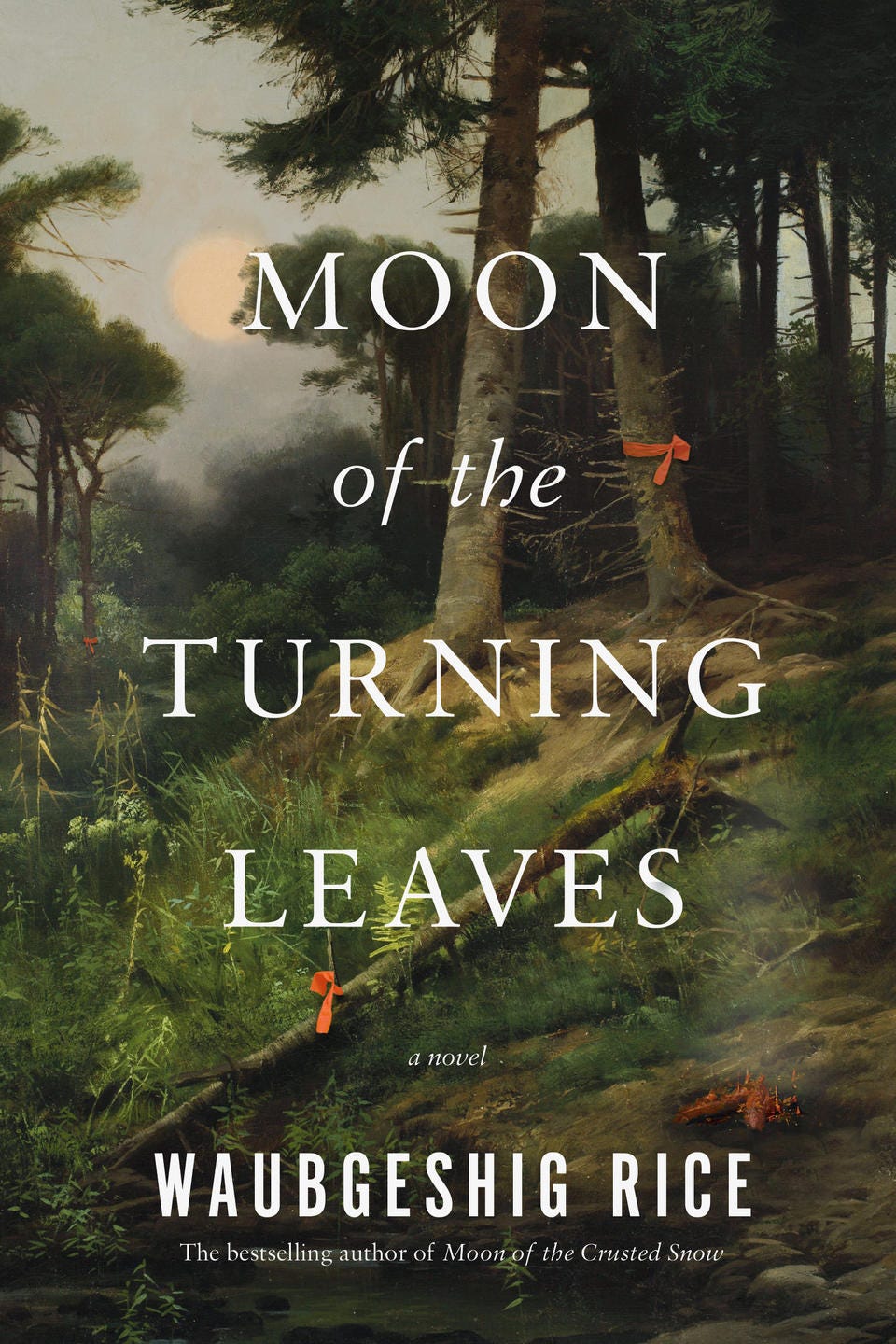This week I’m talking with Waubgeshig Rice about his new novel MOON OF THE TURNING LEAVES, which came out in Canada last fall and was just published in the United States, and how he was inspired by Cormac McCarthy’s 1985 novel BLOOD MERIDIAN to craft a narrative in which the land guides the story.
Waub talks about why he thinks BLOOD MERIDIAN is a post-apocalyptic novel, what he thinks of McCarthy’s representation of Indigenous characters, what he’s most proud of having accomplished in his latest book, and how Emily St. John Mandel’s STATION ELEVEN helped inspire him too. Miigwech to Waub for this excellent conversation!
About MOON OF THE TURNING LEAVES:
In the years since a mysterious cataclysm caused a permanent blackout that toppled infrastructure and thrust the world into anarchy, Evan Whitesky has led his community in remote northern Canada off the rez and into the bush, where they’ve been rekindling their Anishinaabe traditions, isolated from the outside world. As new generations are born, and others come of age in a world after everything, Evan’s people are stronger than ever. But resources around their new settlement are drying up, and elders warn that they cannot stay indefinitely.
Evan and his teenaged daughter, Nangohns, are chosen to lead a scouting party on a months-long trip down to their traditional home on the shores of Lake Huron—to seek new beginnings, and discover what kind of life—and what danger—still exists in the lands to the south.
Waubgeshig Rice’s exhilarating return to the world first explored in Moon of the Crusted Snow is a brooding story of survival, resilience, Indigenous identity, and rebirth.
WAUBGESHIG RICE grew up in Wasauksing First Nation on the shores of Georgian Bay, in the southeast of Robinson-Huron Treaty territory. He’s a writer, listener, speaker, language learner, and a martial artist, holding a black belt in Brazilian Jiu-Jitsu. He is the author of the short story collection Midnight Sweatlodge (2011), and the novels Legacy (2014) and Moon of the Crusted Snow (2018). He appreciates loud music and the four seasons. He lives in N’Swakamok—also known as Sudbury, Ontario—with his wife and three sons.















Share this post